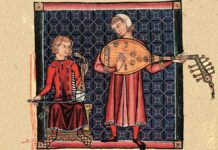Chitto Jetha Bhayshunyo –Where the Mind is Without Fear -represents Rabindranath Tagore’s vision of a new and awakened India. It is a distinctly political and patriotic poem amongst the religious lyrics that make the Gitanjali. Though the subject is patriotic and political, the form is still religious. It is Tagore’s prayer to God for a country, a free India evolved with the qualities and characteristics to be idealized and cherished, which he feels that all his countrymen would adopt.
Tagore prays for the freedom of the country and that too an ideal freedom. He prays that his country becomes a place where a man can go with his mind, free of any fear and where he can hold his head high with self-respect and dignity. A country where every individual can be imparted knowledge freely, where there are no bounds nor are there any fragmentation of the country, are too the boundaries of caste, creed and religion. A new and free India where people speak with the conviction of truth and man earnestly endeavours and endlessly tries to achieve perfection.
A country where man’s power of determining right and wrong is not forced to stagnate and die as a desert stream dies in the sand, where his power of reasoning would not be choked by old, orthodox and outdated customs, habits and traditions. Where man’s mind is always inspired by God to go forward and progress and achieve better thought and action. Finally, he prays to God that his country is changed from the darkness of ignorance and slavery into heaven; “let our country awake a free country, a heaven, a paradise.”
Tagore in this poem prays for the spiritual emancipation of his country and therefore a country where a man can move fearlessly and can conduct themselves nationally and truthfully with nobility and generosity. A country where a man can strive for perfection and his mind is not bound by outdated habits and customs. Tagore prays fervently for such a country and prays for “a heavenly freedom”, this paradise would be a place full of spiritual freedom rather than material.
The poem is written in free verse without any rhyme scheme or meter throughout. Figures of speech like repetition, metaphor, and personification are used to give more poetic effects. The special feature of this poem is the emotion it conveys and the strong feelings of the poet for the progress of the country. It is a poem of hope. The poet uses many metaphors to elaborate on the evils existing in the country. The imagery swings between hopeful and bleak, as Tagore pictures a bright future while facing a relatively poignant present. He believes in the existence of a “clear stream of reason” but acknowledges that it currently helms into the “dreary desert sand of dead habit.”
This poem was written by Tagore during the pre-independence days when India was a colony of the British. The underlying theme of the poem is absolute freedom; the poet wants the citizens of his country to be living in a free state. According to the poem, we see that the poet is expressing his views there should be a country, where people live without any sort of fear and with pure dignity, they should not be felt suppressed by any authority. Tagore expresses his conception of his ideal country. He does not believe in mere political independence but wants to make all-round progress and also to inculcate the highest ethical qualities. A country cannot progress, it cannot even retain its independence if its citizens do not always strive for progress. Tagore’s dream of an independent and progressive India is very inspiring.






























